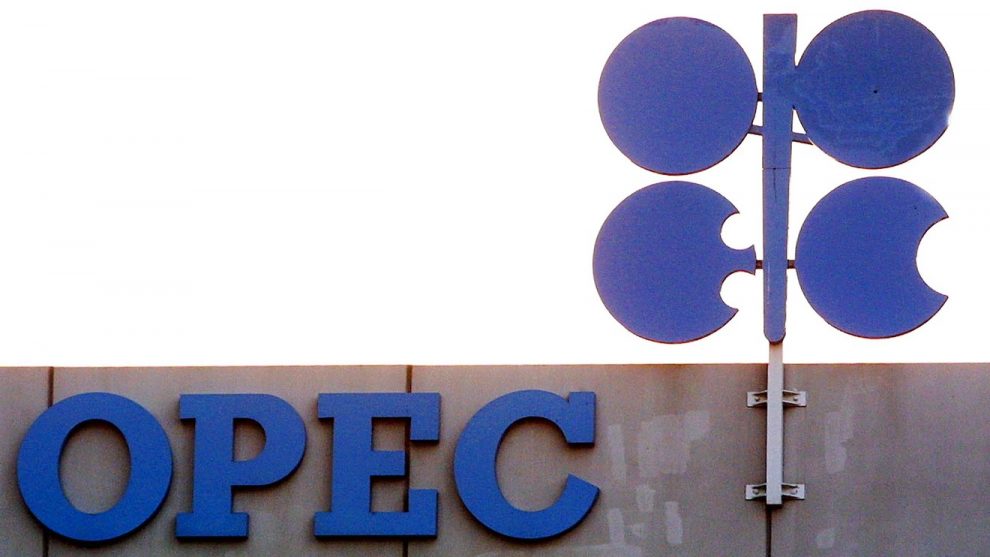
OPEC, Russia and allies were set on Saturday to extend record oil production cuts until the end of July after crude prices doubled in the past two months on the back of their efforts to withdraw almost 10% of global supplies from the market.
The group known as OPEC+ was also set to demand countries such as Nigeria and Iraq, which exceeded quotas in May and June, compensate by making extra cuts in July to September.
OPEC+ had initially agreed in April that it would cut supply by 9.7 million barrels per day (bpd) during May-June to prop up prices that collapsed due to the coronavirus crisis. Those cuts were due to taper to 7.7 million bpd from July to December.
“The agreements went ahead as planned,” Iranian Oil Minister Bijan Zanganeh told Shana news agency after OPEC approved extending the deal until July during a video conference, according to Reuters.
“The main issue was a lack of compliance of members like Iraq with production cut quota, and it was decided that they compensate for that in coming months,” he said.
The decisions still need to be approved by OPEC+, which includes 10 producers such as Russia and Kazakhstan.
A draft OPEC+ declaration said a joint ministerial monitoring committee, known as the JMMC, would now meet once a month until December to review the market situation.
Ahead of the talks, OPEC sources said Riyadh had been considering an extension to August or even December.
Saudi Arabia, OPEC’s de facto leader, and Russia have to perform a balancing act of pushing up oil prices to meet their budget needs while not driving them much above $50 a barrel to avoid encouraging a resurgence of rival U.S. shale production.
“In a refreshing change for OPEC’s decisiveness, it looks like we already have a draft deal,” Rystad Energy’s Bjornar Tonhaugen said in email Saturday.
“Such a deal, with increased monthly monitoring by the JMMC committee, would mark the continuation of a fundamental support for oil prices for the coming months,” he said.
“If the deal is ok, crude inventories will continue to draw down to the tune of 3-4 million barrels per day over July-August, as crude supply may be reduced by an additional 2.5-3 million bpd in July, compared to only a tapering down of the cuts as per the original agreement from April.
Oil has made a huge comeback from the historic dip for U.S. benchmark prices into negative price territory in May, with the recovery in large part due to a production-cut agreement by the Organization of Petroleum Exporting Countries and its allies, and involuntary output reductions in the U.S.
The rebound in prices is a “positive development for the market and a signal that we’ve probably moved through the worst of the underlying imbalance” in the oil market, says Greg Liebl, senior investment strategist at Parametric Portfolio Associates.
Prices CLN20, -1.46% have more than doubled since the negative $37.63 a barrel futures settlement on April 20. At $39.55 a barrel on Friday, however, they were more than 35% lower year to date. Prices on Friday got an added boost as upbeat U.S. jobs data for May fed expectations for a further recovery in energy demand.
Liebl says it’s important to remember that despite the rise in May, WTI is still lower than in early March, just before Saudi Arabia and Russia called off their deal to cut output. Prices settled around $46 the day before news of the deal’s collapse.
“The majority of companies in the industry don’t make money at these low prices, and even Russia and Saudi [Arabia] need oil to be higher than $55 a barrel to balance their budgets,” says Alissa Corcoran, analyst and director of research at Kopernik Global Investors. “These low prices aren’t sustainable for any meaningful period of time, which has posed very attractive buying opportunities for us.”
She says that prices would need to be at about $75 to incentivize new oil supply, and they are far from it. “We find the best investment opportunities when the price is significantly different than the incentive price, as is the case with oil today,” she says.
An OPEC+ decision to extend production cuts may, however, cause supplies to tighten too much before year end. “The rolling over of OPEC production cuts will cause the global oil market to fall into severe deficit by the fourth quarter,” says Leigh Goehring, managing partner at investment firm Goehring & Rozencwajg.
U.S. shale production may see a “huge fall-off” starting in the third quarter, Goehring says. Combined with a continued rebound in demand, that would result in “huge inventory drawdowns” by the middle of the third quarter that will accelerate into the fourth quarter.
“Oil prices will continue to surprise to the upside as the year progresses, very much like they have surprised most people over the past 30 days,” says Goehring.
Still, higher prices may eventually lead to more shale production, and the path for demand remains uncertain.
“There is a risk that production from North American shale creeps higher, responding to a partial recovery in crude prices, while the oil demand recovery is expected to slow down by September…in the seasonal weaker period,” says Chris Midgley, global head of analytics at S&P Global Platts.
“There is also the risk of secondary waves of [Covid-19] infection, posing a significant risk to oil demand” and prices, he adds.









